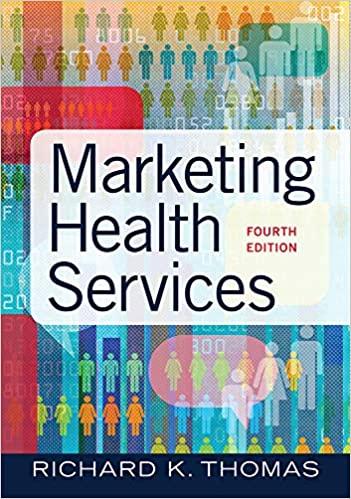Like many healthcare organizations, Yale New Haven Hospital (YNHH) was being asked to do more with less
Question:
Like many healthcare organizations, Yale New Haven Hospital (YNHH) was being asked to do more with less when it came to marketing. Given its modest advertising budget and the area’s high media costs, YNHH had focused its advertising on billboards, newspapers, and the Yellow Pages. Advertising via radio, television, and magazines was considered too expensive. From 1995 to 1999, most of its advertising dollars went into three-quarter-page display ads in daily newspapers across Connecticut. These ads, developed through a lengthy review process with a traditional advertising agency, were ineffective at increasing consumer awareness because the limited budget prevented consistent exposure to the public.
To find a more effective yet inexpensive means of advertising, YNHH considered banner ads in newspapers. These ads are small strips that are 2 to 3 inches tall and 5 to 12 inches wide. Usually one topic is covered per ad, and the ads may or may not include artwork. Banner ads are designed to stand out by using color and regular placement in the newspaper. They generally run on a daily basis at the top or bottom of the front page. The cost of the banner ad depends on size and location. Most banner ads include a “call to action,” giving the reader an opportunity to respond to the sales pitch. To test the effectiveness of banner ads, YNHH placed a 0.5-inch by 12-inch strip ad at the bottom of the front page of the local newspaper twice a week. After a few months, however, the hospital found no noticeable increase in calls to YNHH for information or physician referrals. A meeting was held with the local paper’s sales executives to share the unfavorable results. The hospital informed the newspaper that it would stop running the banner ads if the newspaper did not develop a better approach. The paper proposed a new format that would involve a major redesign of the front page to allow space for a bigger ad, at no additional cost to the hospital.
YNHH expanded its banner ad initiative in the fall of 2000, eventually developing more than 350 newspaper ads. Most of the ads promoted clinical programs such as cardiac, cancer, and diabetes treatment; maternity care; and ongoing clinical trials. Other ads directed consumers to YNHH’s call center, promoting its physician referral program, health information library, nurse advice line, and women’s heart line. Another group of ads promoted consumer-oriented services, such as internet-based services, press conferences to announce newborn babies, and support groups. A final category of ads promoted general awareness of YNHH’s programs and announced special events, such as National Nurses Day.
Questions
1. What prompted YNHH to rethink its use of banner ads in newspapers?
2. What changes were implemented to make the banner ads more effective?
3. What types of services seem to be best suited to this type of advertising?
4. What was the impact of the new banner ads in terms of traffic generated for YNHH?
5. How could the declining importance of newspapers affect YNHH’s reliance on this marketing technique?
6. What are the implications of the demographics of loyal newspaper subscribers for the use of this medium to reach healthcare consumers?
7. Are there more contemporary forms of media in which banner ads might be more effective?
Step by Step Answer:






